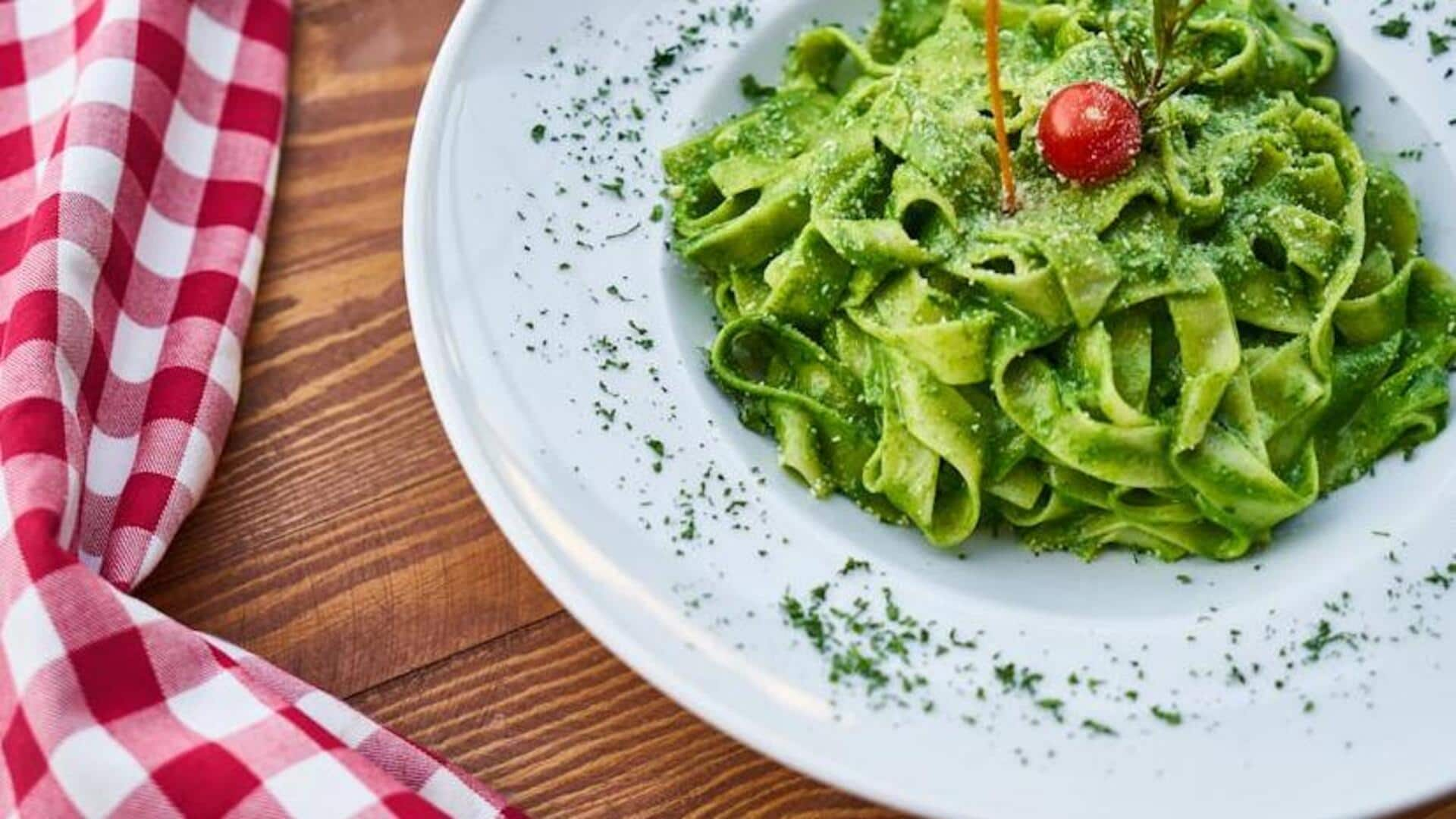
Try this Italian vegan pesto pasta recipe
What's the story
Italian vegan pesto pasta is a delightful twist on traditional Genoese sauce, using plant-based alternatives to cheese for vegan diets. Originating from Italy, pesto has been a Mediterranean staple, known for its simple yet rich flavors. This version keeps the classic recipe's essence, ensuring it's accessible to those on a vegan lifestyle. Let's start cooking and bring a piece of Italy into your kitchen.
Ingredients list
Gather the following ingredients
To prepare this dish, you'll need two cups of fresh basil leaves, three tablespoons of pine nuts (walnuts are an alternative), two large cloves of garlic, half a cup of extra-virgin olive oil, one tablespoon of nutritional yeast (for that cheesy flavor without the cheese), salt and pepper to taste, and 400 grams of your preferred pasta (ensure it's eggless).
Step 1
Preparing the vegan pesto
In a food processor, blend basil leaves, pine nuts or walnuts, garlic cloves, and nutritional yeast into a coarse paste. Gradually add extra-virgin olive oil on low speed until smooth and creamy. Season with salt and pepper to taste. This method ensures the pesto maintains its traditional texture and flavor, adapting it perfectly for a vegan diet.
Step 2
Cooking the pasta
Bring a large pot of salted water to boil over high heat. Add your choice of pasta and cook according to package instructions until al dente - tender but still firm to the bite. Reserve about one cup of pasta water before draining; this starchy water can be used later to adjust the consistency of your pesto sauce when mixing with pasta.
Step 3
Combining pesto and pasta
In a large bowl or back in the pot used for cooking pasta (make sure it's off heat), combine cooked pasta with your freshly made vegan pesto sauce. Toss well to ensure each strand or piece is evenly coated with pesto. If you find the mixture too thick or dry, add some reserved pasta water bit by bit until you reach the desired consistency.
Step 4
Serving suggestions
Serve your Italian vegan pesto pasta warm or at room temperature. For added color and nutrition, top it with halved cherry tomatoes or roasted vegetables, such as zucchini and bell peppers. This dish pairs beautifully with a side salad, creating a complete, satisfying meal. Perfect for anyone seeking classic Italian cuisine without animal products, it promises taste and health benefits from its all-vegetarian ingredients.